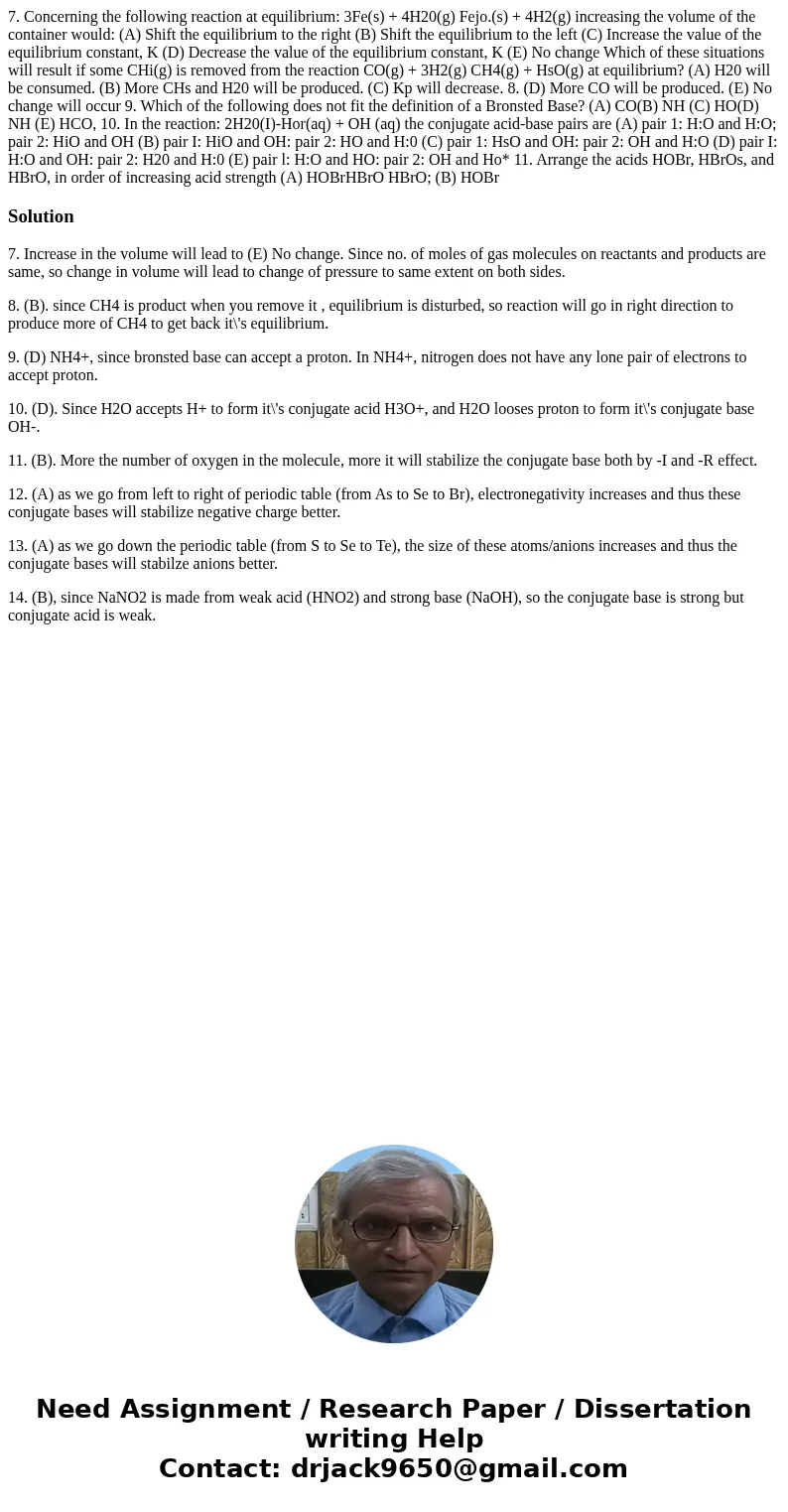7 Concerning the following reaction at equilibrium 3Fes 4H2
Solution
7. Increase in the volume will lead to (E) No change. Since no. of moles of gas molecules on reactants and products are same, so change in volume will lead to change of pressure to same extent on both sides.
8. (B). since CH4 is product when you remove it , equilibrium is disturbed, so reaction will go in right direction to produce more of CH4 to get back it\'s equilibrium.
9. (D) NH4+, since bronsted base can accept a proton. In NH4+, nitrogen does not have any lone pair of electrons to accept proton.
10. (D). Since H2O accepts H+ to form it\'s conjugate acid H3O+, and H2O looses proton to form it\'s conjugate base OH-.
11. (B). More the number of oxygen in the molecule, more it will stabilize the conjugate base both by -I and -R effect.
12. (A) as we go from left to right of periodic table (from As to Se to Br), electronegativity increases and thus these conjugate bases will stabilize negative charge better.
13. (A) as we go down the periodic table (from S to Se to Te), the size of these atoms/anions increases and thus the conjugate bases will stabilze anions better.
14. (B), since NaNO2 is made from weak acid (HNO2) and strong base (NaOH), so the conjugate base is strong but conjugate acid is weak.

 Homework Sourse
Homework Sourse